
Use the resources below to host your MMS launch event! Follow these easy steps and pick what works for you.
Tune in on NASA TV, NASA EDGE and NASA EDGE USTREAM to watch the launch and attend the press conference. It's just like you're there! The launch is currently scheduled for March 12, 2015, but please continue to check this website and social media for potential updates as the launch draws closer.
http://www.nasa.gov/ntv
The NASA EDGE MMS live webcast from NASA Kennedy Space Center starts at 9:15 pm on Thursday, March 12 and ends at 10:50 pm.
+ NASA EDGE Website
+ NASA EDGE USTREAM Website
+ Past NASA EDGE MMS Shows
MMS MAGNETIC SPACE CAFÉ
We've created an online group for those who wish to stay up to date with the MMS community. Here you will find mission outreach updates, chat with other mission enthusiasts and share ideas! We will also keep you posted about the upcoming launch in March!
To join the group, click this link, “MMS MAGNETIC SPACE CAFÉ”, enter your email address and simply reply to the confirmation email that you will receive. That's it!
Social Media Community:
Shared Networks to Join and Explore:
GODDARD SPACE FLIGHT CENTER:
NASA EDGE
THE SUN TODAY
SUN-EARTH DAY (SED)
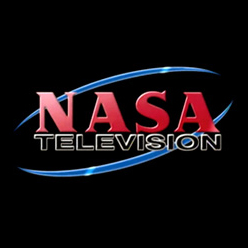 |
NASA Television The NASA Television App brings live and on-demand TV programming to your phone. Watch the latest NASA events unfold in real-time or select from a list of recently uploaded videos. Or plan your viewing up to a week in advance with the NASA TV schedule. |
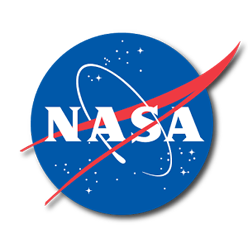 |
NASA App The NASA App showcases a huge collection of the latest NASA content, including images, videos on-demand, NASA Television, mission information, news & feature stories, latest tweets, ISS sighting opportunities, satellite tracking, Third Rock Radio and much more. |
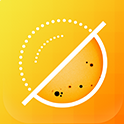 |
DIY Sun Science DIY Sun Science, funded by NASA, allows families and educators to investigate and learn about the Sun at home, at school, or anywhere you go! Developed by UC Berkeley’s The Lawrence Hall of Science. |
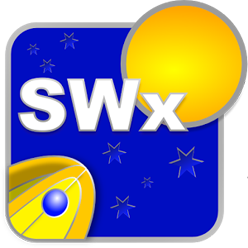 |
NASA Space Weather The NASA Space Weather App provides access to space environment information from the sun to the earth, giving users a look at complex physical processes as they evolve, and how these processes affect the near earth space environment. |
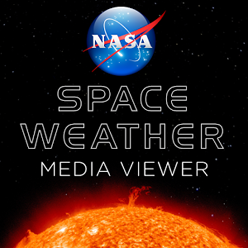 |
NASA Space Weather Media Viewer The Space Weather Media Viewer features near-real-time imagery from a wide variety of NASA missions, as well as video interviews with prominent scientists about the causes of space phenomena and NASA-created visualizations. The Space Weather Media Viewer was created as part of NASA's education and public outreach program. |
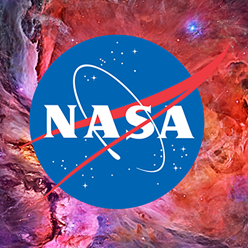 |
Astronomy Picture of the Day Developed in partnership with NASA, Astronomy Picture of the Day for the iPhone/iPad brings the vastness of space right into your hand. Browse through decades of high resolution NASA space photos hand selected by NASA astronomers. Jump to photos by date, save them to your photo roll or share them friends. Want that latest Hubble photo as a background? Then APOD is for you. |
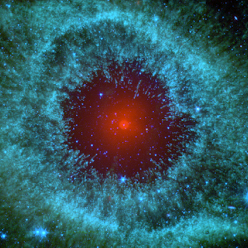 |
Space Images NASA/JPL's Space Images V2 has arrived, packing exciting new features, videos and stunning hi-res photos. Already a fan? Upgrade to start sharing images with friends on Facebook and Twitter, browse our new video collection and get even closer to the space you love. It's all free! |
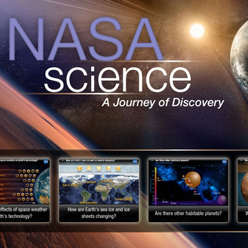 |
NASA Science: A Journey of Discovery NASA leads the nation on a great journey of discovery, seeking new knowledge and understanding of our planet Earth, our Sun and solar system, and the universe out to its farthest reaches and back to its earliest moments of existence. This NASA Science application brings you the latest information from NASA's Science Missions, including the spacecraft, their instruments, the data, and what we are learning about the questions we seek to answer. |
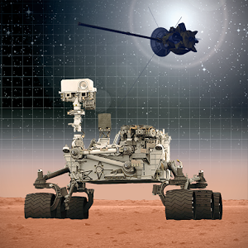 |
Spacecraft 3D NASA's Spacecraft 3D is an augmented reality (AR) application that lets you learn about and interact with a variety of spacecraft that are used to explore our solar system, study Earth, and observe the universe. Using a printed AR Target and the camera on your mobile device, you can get up close with these robotic explorers, see how they move, and learn about the the engineering feats used to expand our knowledge and understanding of space. Spacecraft 3D will be updated over time to include more of the amazing spacecraft that act as our robotic eyes on the earth, the solar system and beyond! |
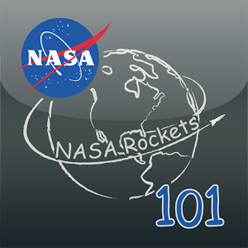 |
Rocket Science 101 You don't have to be a rocket scientist to launch a NASA spacecraft with NASA's Rocket Science 101 (RS101)! Select your favorite NASA mission and build a rocket to send the spacecraft into orbit. As you take the RS101 challenge, you can learn more about thrilling missions and the various components of the launch vehicles, how they are configured and how they work together to successfully launch a NASA spacecraft. NASA's Launch Services Program (LSP) does the same things for real rockets and exciting spacecraft missions every day - now it's your turn! |
Recommended Videos and Animations
Collections
Set up your own photo gallery of about the MMS mission, magnetisim or model making to inspire people and showcase the beauty of MMS science and engineering! You can use your own photos, ask people for submissions, or use some of ours. Here are some links to get you started:
+ MMS Education
+ News & Media Resources
+ MMS Images
+ MMS Videos
+ Southwest Research Insititute
+ Solar Terrestrial Probes (STP)
+ Explorers and Heliophysics
Projects Division (EHPD)
+ NASA Goddard Space Flight Center
+ Visit NASA.gov